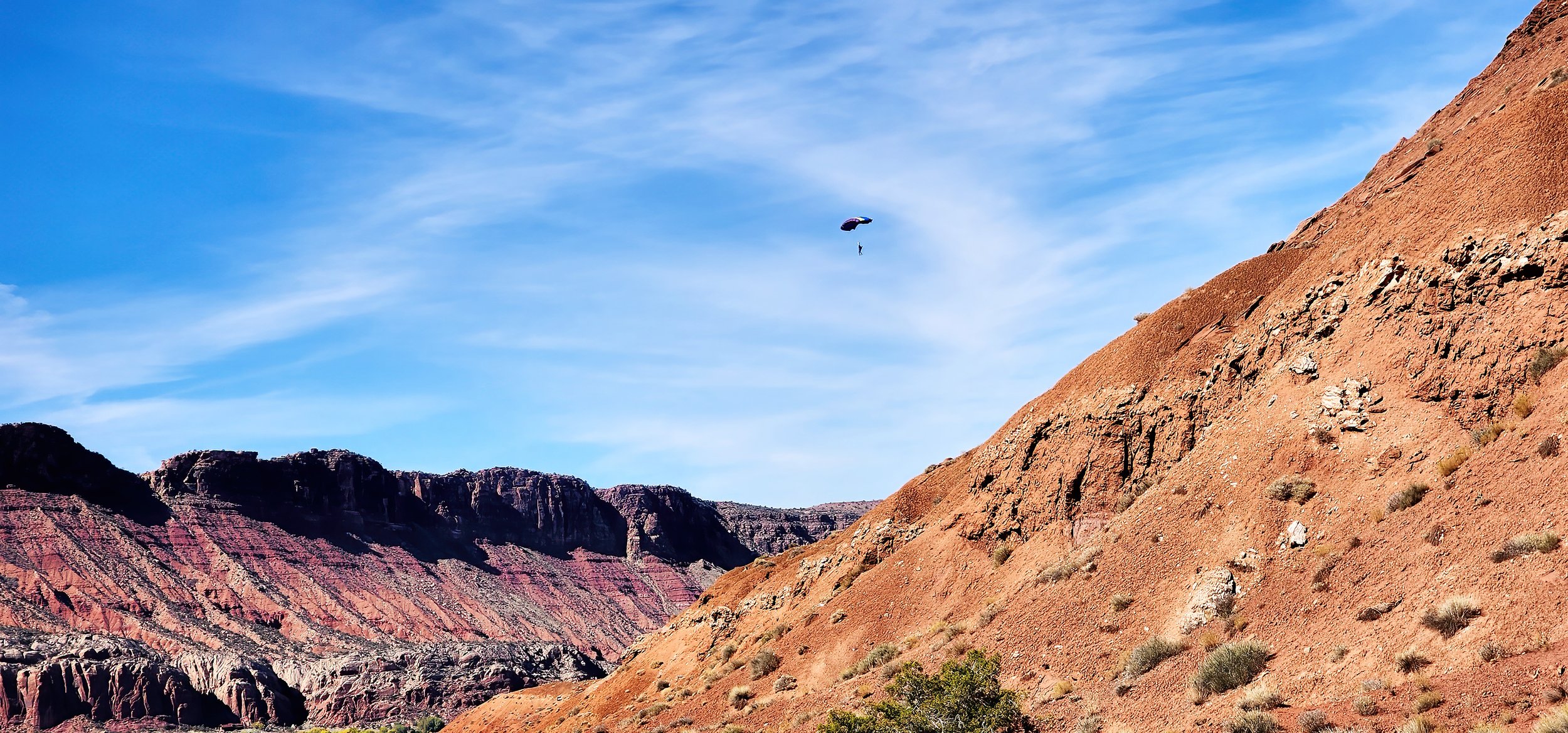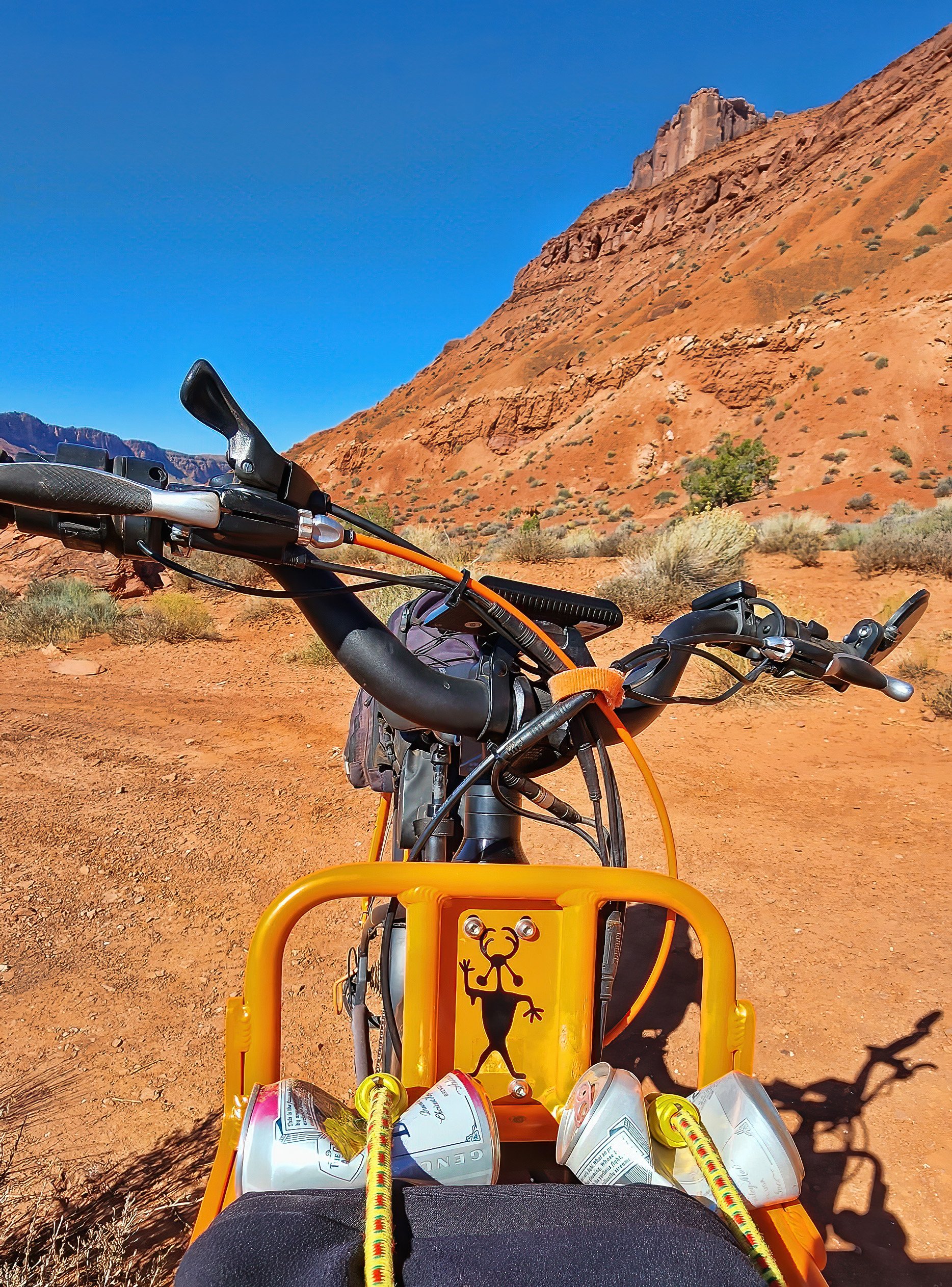in the high desert of Castle Valley, Utah. Not bad. Not bad at all.
Click on image to enlarginate.
in the high desert of Castle Valley, Utah. Not bad. Not bad at all.
Click on image to enlarginate.
doubles as a nocturnal watering hole for mule deer wandering in the valley. Here are a couple, among a half-dozen, that were caught by the trail camera last night.

Mule deer (Odocoileus hemionus).

is not fatal to humans, but you don’t want to get nipped by one and allergic reactions are possible. Surprises come in small packages.

Northern scorpion (Paruroctonus boreus).

All scorpions fluoresce under an ultraviolet (UV) light. Cool and creepy. Toothpick for scale.
this evening. This never gets old.

Note the climbing party on the Fine Jade route, on the right side of The Rectory, facing Castleton Tower.
is known as the Beaver Moon, and it precedes a total lunar eclipse that occurs early tomorrow morning. Stay tuned.

UPDATE: A high, thin cloud layer moved in later in the evening obscuring a clear view of the eclipse. Double dang. This is my best image, caught partially eclipsed, at 2:30 am MST.

lurks near the feeding station in a locust tree, ready to pounce. Everybody’s gotta eat.

Sharp-shinned Hawk (Accipiter striatus).

of Castle Valley, Utah from a high vantage point below Porcupine Rim, with a nearly-full Moon rising above Adobe Mesa in the center of this image.

where all children are above average, the kids in Castle Valley apparently fall on the other side of the mean. How embarrassing for our community.

marks the end of the first day of November.

the feeding stations from a lofty perch, taking note of the abundant finches and sparrows on the buffet. I’m anticipating this one will be a regular visitor through the winter season.

Sharp-shinned Hawk (Accipiter striatus).
with the jays that are now frequently visiting my feeding stations.

Pinyon Jay (Gymnorhinus cyanocephalus).
was slow to dissipate today, but ultimately revealed Castleton Tower during my afternoon ride.


fell overnight in Castle Valley. More rain continues to fall into the day, eventually turning to sleet/hail/snow, but no catastrophic flooding has occurred.

UPDATE: A total of 1.6 inches (41 mm) of rain fell in this first winter storm of the season. An outstanding start to the water year.
in the canyon lands and I managed to catch somebody leaping off of Parriott Mesa.


is one of my favorites in the area, and during breeding season in the spring it broadcasts a pleasant song.

Spotted Towhee (Pipilo maculatus).
on my recently refurbished RadRover 5, now approaching 4,300 miles (6,900 km). The vinyl explorer is seen below, with aluminum cargo found discarded along the road.

We’ve had a week of stunningly beautiful days. Here’s the view today, at high noon, looking south from the base of Parriott Mesa.


My Trek Firefly eMTB continues to be super fun and now registers 1,091 miles (1,756 km) on its digital odometer.
of light through water droplets is gorgeously and dramatically illustrated this evening by this full rainbow over Castle Valley, Utah. Wow.
Click on image to enlarge.
to the remaining high desert pollinators by the tiny broom snakeweed and much larger rubber rabbitbrush, the last remaining flowering plants this season. They’re both quite lovely right now.

Rubber rabbitbrush (Ericameria nauseosa (formerly Chrysothamnus nauseosus)).

Broom snakeweed (Gutierrezia sarothrae).
that occur in the region’s sandstones are, as believed by some, excavated by the extremely rare and endangered Diamond-billed Rock Pecker. They remain elusive to this bird photographer and so a drawing will have to suffice.


Save the Pecker! This sticker is available at Moab Motorsports.
Geologists, on the other hand, would suggest that the eroded pockets are a product of chemical weathering by dissolution of the binding cements in the sandstone, with the wind sweeping out the grains, slowly through time. That seems to be the working explanation elsewhere.
found clinging to an old bicycle tire headed for recycling.

Fully grown plateau fence lizard (Sceloporus tristichus) about three inches (eight centimeters) long.